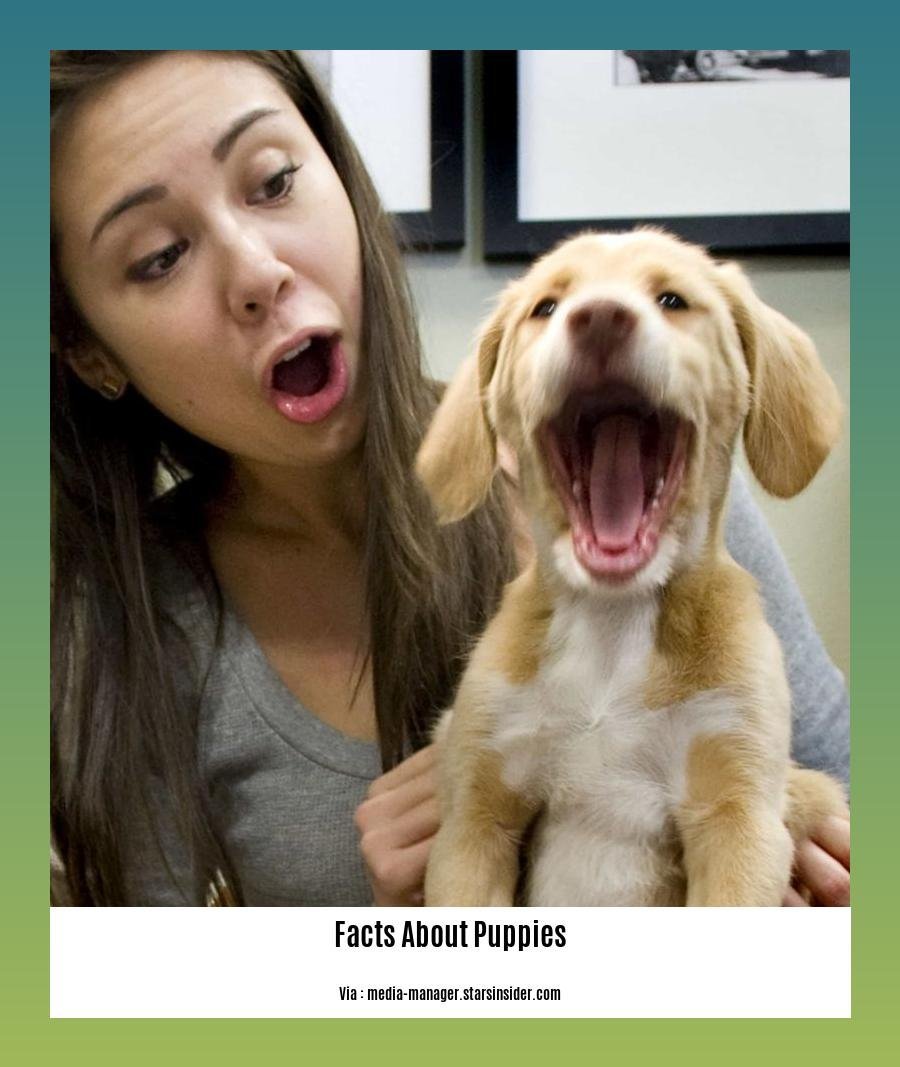Fascinating Facts About Puppies and Kittens: Unveiling the Charming World of our Furry Friends
Get ready to embark on an enchanting journey into the world of adorable puppies and cuddly kittens. In this article, we will delve into the fascinating facts that make these little creatures so captivating. From their growth and development to their unique behaviors, we will unravel the mysteries behind their charming ways. Whether you are a seasoned pet owner or considering welcoming a furry friend into your home, join us as we explore the joys and challenges of embracing the adorable world of puppies and kittens.
Key Takeaways:
- Dogs mainly see in shades of grey and are unable to perceive blues and reds.
- Cats are lactose intolerant and should avoid consuming dairy products.
- Dogs with squashed faces, such as brachycephalic breeds, are more prone to health problems due to their unique anatomy.
- Both cats and dogs have distinctive ridged nose patterns, similar to human fingerprints.
- The gestation period for cats and dogs is approximately 50-60 days before giving birth.
- Dogs have been observed to have a preference for defecating along the earth’s north-south magnetic axis.
- The world’s oldest cat lived to be 36 years and 1 day old.
- Cats and dogs use their whiskers to detect changes in their surroundings.
- Most cats and dogs have 18 toes, although there are exceptions such as polydactyl cats.
For more information, you can refer to the following sources:
- “120 Little Known Facts About Cats” from Halifax Humane Society: [^2^]
- “240+ Fantastic Facts About Cats and Dogs” from Interesting Animal Facts: [^3^]
These sources provide additional interesting facts about cats and dogs that you can include in your article.
Facts About Puppies and Kittens: Unveiling the Charming World of our Furry Friends

Dogs and cats have earned a special place in our hearts with their endearing antics and unwavering loyalty. These adorable little creatures never fail to bring joy and laughter to our lives. But have you ever wondered about the fascinating facts that make puppies and kittens even more enchanting? In this article, we delve into the wondrous world of our furry friends to uncover some intriguing facts about these delightful bundles of fur.
Fact 1: Dogs and Color Perception
Did you know that dogs can indeed see in color? However, their color vision is not as vibrant as ours. While humans perceive a wide range of colors, dogs mostly see shades of gray. Blues and reds, in particular, may appear muted to them. So, the world of a dog may be a little less colorful than ours, but they make up for it with their exceptional sense of smell and hearing. It’s their other senses that truly dominate their experience of the world.
Fact 2: Cats and Dairy
You might think that cats and milk go hand in hand, but here’s a surprising fact: cats are lactose intolerant. While they may love the taste of milk, their digestive system won’t appreciate it. Consuming dairy products can lead to upset stomachs and diarrhea for our feline friends. So, when it comes to treats for kitties, it’s best to stick to options specifically formulated for their nutritional needs.
Fact 3: Brachycephalic Breeds and Health Concerns
Certain dog breeds, such as pugs and bulldogs, have adorable squashed faces, but this unique anatomy comes with its own set of challenges. Brachycephalic breeds are more prone to health problems due to restricted airflow and other issues related to their shortened airways. It’s important to be aware of these potential health concerns and provide these breeds with proper care and attention to ensure their well-being.
Fact 4: Noses with Fingerprints
We often marvel at the uniqueness of human fingerprints, but did you know that both cats and dogs also have distinct patterns on their noses? These ridged nose prints act as a special identifier, just like fingerprints for humans. So, if you ever feel the urge to investigate your pet’s identity further, take a closer look at their adorable little noses—it’s a sure way to recognize them!
Fact 5: Gestation Periods
The journey to new life is awe-inspiring for both cats and dogs. These furry mothers go through a relatively short gestation period of around 50-60 days before giving birth. During this time, they undergo incredible transformations to nurture and protect their growing offspring. It’s a testament to the wonders of life and showcases the incredible abilities of our beloved pets.
Fact 6: Magnetic Axis Preference
Did you ever imagine that dogs have a preference for defecating along the earth’s north-south magnetic axis? It sounds peculiar, doesn’t it? Scientists have observed that many dogs align themselves with the Earth’s magnetic field while answering nature’s call. Although the reasons behind this behavior remain unclear, it adds another layer of fascination to the already intricate world of dogs.
Fact 7: The Oldest Cat on Record
Prepare to be amazed by the extraordinary lifespan of a feline. The world’s oldest living cat reached an impressive age of 36 years and 1 day. This remarkable achievement showcases the potential for a long and fulfilling life for our beloved cats. It’s a testament to the love and care we provide to these graceful creatures.
Fact 8: Whiskers: Nature’s Sensors
Cats and dogs possess remarkable sensory tools—whiskers. Just like antennae, these vibrissae act as a radar system, helping them navigate their surroundings in the most remarkable ways. Whiskers enable them to sense changes in their environment, aiding in hunting, exploring, and ensuring their safety. So, next time you find yourself admiring those elegant whiskers, remember the vital role they play in their lives.
Fact 9: Paws and Toes
When it comes to counting toes, most cats and dogs have 18 toes in total—five on their front paws and four on their back paws. However, there are exceptions to this rule, such as polydactyl cats that boast additional toes. Whether they have the standard number or a special surplus, these adorable paws allow our furry companions to explore their world and leave their mark on our hearts.
Intrigued by these fascinating facts about puppies and kittens? These adorable creatures never cease to amaze us with their unique characteristics and behaviors. From their special sensory abilities to their astonishing resilience, they continue to capture our hearts and enrich our lives. Embracing the joys and challenges of raising puppies and kittens responsibly is a journey filled with unconditional love and lifelong companionship.
For more information and a wider array of interesting facts about cats and dogs, you can refer to the following sources:
- “120 Little Known Facts About Cats” from Halifax Humane Society: [^2^]
- “240+ Fantastic Facts About Cats and Dogs” from Interesting Animal Facts: [^3^]
Remember to explore further and uncover even more wonders about these extraordinary beings we call our pets. The world of puppies and kittens is brimming with enchantment and opportunities to deepen our bond with these furry friends.
Check out these fascinating facts about pond water! From the diverse ecosystem it supports to the interesting microorganisms that call it home, there’s so much to discover. Explore more about pond water by clicking here!
Interested in salt water pools? Learn some mind-blowing facts about them that will leave you amazed. Dive into the world of salt water pools by clicking here!
Get ready to be amazed by the incredible world of sea animals! Discover unique adaptations, surprising behaviors, and unbelievable species that inhabit our oceans. Dive into the deep blue sea and uncover fascinating facts about sea animals by clicking here!
Common Behaviors Exhibited by Puppies and Kittens

Puppies and kittens are undeniably adorable, but they also possess a unique set of behaviors that can be both endearing and challenging for their owners. Understanding these common behaviors is essential for providing proper care and ensuring a harmonious relationship with our furry friends. So, let’s delve into the fascinating world of puppies and kittens and explore the behaviors that make them so enchanting.
Developmental Stages and Behaviors
Just like human babies, puppies and kittens go through various developmental stages that shape their behavior and personality. It is crucial for owners to be aware of these stages to provide appropriate training and socialization. From the adorable newborn phase to the energetic exploration of adolescence, each stage brings its own set of behaviors.
The Neonatal Stage: During the first few weeks of their lives, puppies and kittens are completely dependent on their mother for nourishment and care. They spend most of their time sleeping and nursing, as their sensory abilities are still developing.
The Transitional Stage: Between two to four weeks of age, puppies and kittens start to open their eyes, hear, and gradually explore their surroundings. This is when they begin to walk, play, and interact with their littermates. It’s an exciting time to observe their curiosity and growing independence.
The Socialization Stage: Around three to fourteen weeks of age, puppies and kittens are highly impressionable and open to learning. This is the critical period for socialization, where they should be exposed to various experiences, people, animals, and environments. Proper socialization during this stage lays the foundation for well-adjusted and confident adult pets.
The Juvenile Stage: From three to six months old, puppies and kittens behave much like human teenagers. They may test boundaries, engage in more exploratory behaviors, and display bursts of energy. Consistent training and clear boundaries are crucial during this stage to shape their behavior appropriately.
Common Behavior Problems and Solutions
While puppies and kittens are undeniably adorable, they can also exhibit some challenging behavior problems. However, with proper training, socialization, and understanding, these issues can be prevented or managed effectively.
Inappropriate Elimination: Puppies and kittens may initially struggle with house training, leading to accidents indoors. Consistent and positive reinforcement-based training methods, combined with a consistent routine, will help them learn appropriate elimination behaviors.
Chewing, Mouthing, and Biting: Puppies and kittens explore their world through their mouths, which can lead to inappropriate chewing, mouthing, and sometimes even biting. It is crucial to redirect this behavior to appropriate chew toys and provide consistent training to teach them proper bite inhibition.
Growling and Aggression: While rare, puppies and kittens may display signs of aggression such as growling or biting. It is important not to ignore these behaviors, as early intervention and training can prevent them from escalating. Consultation with a veterinary professional or behavior specialist is recommended to address such issues.
The Importance of Socialization
Socialization plays a vital role in shaping the behavior of puppies and kittens. By exposing them to a variety of stimuli, including different people, animals, and environments, owners can help them develop into well-adjusted and confident pets.
Interacting with Humans: Puppies and kittens need positive experiences with people of all ages, allowing them to become comfortable in various social situations. Gentle handling, exposure to different individuals, and plenty of positive reinforcement contribute to their social development.
Interacting with Littermates and Other Animals: Early interactions with littermates and other animals teach puppies and kittens how to communicate, play, and establish appropriate boundaries. These experiences strengthen their social skills and reduce the likelihood of future aggression.
Seeking Professional Assistance
While understanding and addressing common behaviors in puppies and kittens is important, it is essential to recognize when professional help is needed. Veterinary professionals or behavior specialists can provide expert guidance and support in managing challenging behaviors or addressing any concerns regarding your pet’s behavior.
When it comes to the enchanting world of puppies and kittens, their unique behaviors make every moment spent with them special. By taking the time to understand their development, socializing them properly, and addressing any behavior issues, we can create a loving and harmonious relationship with our furry friends.
Key Takeaways:
- Puppies and kittens go through different developmental stages that shape their behavior and personality.
- Early socialization is crucial for puppies and kittens to become well-adjusted and confident adult pets.
- Common behavior problems in puppies and kittens include inappropriate elimination, chewing, mouthing, growling, and biting.
- Consistent training, positive reinforcement, and early intervention can help prevent and manage behavior problems.
- Socialization with humans, littermates, and other animals is essential for the social development of puppies and kittens.
- Seek professional assistance from veterinary professionals or behavior specialists when necessary.
Sources:
– Seksel, K. (2008). Preventing Behavior Problems in Puppies and Kittens. ScienceDirect.
– Clinician’s Brief. (n.d.). Puppy & Kitten Socialization. Clinician’s Brief.
Care Needs and Responsibilities of Raising Puppies and Kittens
As pet lovers, we know there’s something truly enchanting about puppies and kittens. Their playful nature, innocent eyes, and adorable antics have captured our hearts for centuries. It’s no wonder that welcoming these furry companions into our lives brings us immense joy and fulfillment.
But with great joy comes great responsibility. Raising puppies and kittens requires a deep understanding of their care needs and the responsibilities that come with it. In this article, we’ll explore the ins and outs of caring for these delightful creatures, from health and training to lifelong companionship.
The Importance of Preventive Care
Just like us, puppies and kittens require regular visits to the veterinarian to ensure their health and well-being. Prevention is key when it comes to raising healthy pets. Vaccinations, parasite control, and routine check-ups are essential to protect them from diseases and to catch any potential health issues early on.
Potty Training and House Rules
One of the challenges of raising a puppy and kitten together is potty training. However, with patience and consistency, it is possible to train them together and establish a routine. [Care needs and responsibilities of raising puppies and kittens] include teaching them where to eliminate, whether it’s outside or in a designated area indoors. Establishing house rules from the beginning, such as where they can play or sleep, will help create a harmonious living environment for both pets and their owners.
Exercise for Mental and Physical Health
Proper exercise is crucial for the overall well-being of puppies and kittens. Regular physical activity helps them burn off energy, promotes healthy growth and development, and prevents behavioral problems caused by boredom. Whether it’s playtime, walks, or interactive toys, engaging your pets in exercise and enrichment activities will keep them physically and mentally stimulated.
Lifelong Companionship and Learning
Raising a puppy and kitten together offers a unique opportunity for them to learn from each other and potentially develop a lifelong bond. While they may have different temperaments and personalities, their playful interactions can help them establish social skills and build a strong friendship. It’s a joyous experience to witness the magical connection that can form between these furry friends.
Key Takeaways:
- Regular preventive care, including vaccinations and check-ups, is essential for the health of puppies and kittens. Citation: Animalpath.org, Petfinder
- Potty training should be done together, establishing a routine and teaching them where to eliminate. Setting house rules helps create a harmonious living environment.
- Exercise is vital for their mental and physical health, preventing behavioral problems caused by boredom.
- Raising a puppy and kitten together allows them to learn from each other and potentially develop a lifelong bond.
Benefits of Having Puppies and Kittens as Companions
Our furry friends, puppies and kittens, have a way of enchanting our lives with their adorable presence. Beyond just being cute, they offer numerous benefits as companions that can enhance our well-being and bring us immense joy. Let’s explore the remarkable benefits of having puppies and kittens as companions and discover why they make such wonderful additions to our lives.
1. Lifelong Friendship
When puppies and kittens are raised together, they often form a strong bond that lasts a lifetime. Their shared experiences and mutual understanding create a unique friendship that can bring immeasurable happiness to both pets and their owners. Witnessing the playfulness and affection between a puppy and a kitten is truly heartwarming, and their friendship can provide comfort and companionship throughout their lives.
2. Endless Entertainment and Joy
Having both puppies and kittens in a household can bring endless entertainment and joy to the owners. Their playful nature and curiosity guarantee hours of amusement as they explore their surroundings, chase after each other, and engage in delightful antics. The energy and enthusiasm they exhibit are contagious, brightening our days and reminding us to embrace the simple pleasures of life.
3. Mutual Learning and Social Skills
Puppies and kittens have a lot to learn, and by being raised together, they have the opportunity to observe and imitate each other’s behaviors. This process helps them develop crucial social skills and a deeper understanding of their own species. As they interact and play together, they learn vital lessons in communication, boundaries, and cooperation. This mutual learning not only enriches their development but also enhances their ability to interact with other animals and humans as they grow older.
4. Early Introduction for Better Compatibility
Introducing puppies and kittens when they are still young can significantly improve their compatibility and harmonious coexistence in the household. When brought up together, they become accustomed to each other’s presence, minimizing the chances of territorial issues or conflicts later on. The early introduction also allows them to adapt to their shared environment and establish a sense of familiarity and trust, which is crucial for fostering a peaceful and loving bond between them.
5. Time-Saving in Training and Teaching
Raising a puppy and kitten together can be beneficial in terms of training and teaching. As they observe and learn from each other, certain behaviors and commands can be reinforced simultaneously, saving time and effort for the owners. The companionship of a puppy and a kitten can make training sessions more enjoyable and engaging for both pets and their owners, facilitating a smoother learning process for everyone involved.
6. Setting Boundaries for a Harmonious Household
To ensure a harmonious household with both a puppy and a kitten, it’s essential to set clear boundaries and provide separate spaces for each pet. This allows them to have their own territory and retreat when needed, reducing the likelihood of conflicts or tension. By establishing these boundaries and providing individual attention, affection, and resources, owners can create an environment where both pets feel secure and content.
7. Double the Enjoyment of Cuteness and Cuddles
Last but certainly not least, having puppies and kittens together means double the cuteness and cuddles. The irresistible charm and adorable antics of these furry companions bring immense joy and warmth to our lives. Whether they are snuggling up together or playfully pouncing around, their presence adds a touch of sweetness that can melt our hearts and brighten even the dullest of days.
Key Takeaways:
- Puppies and kittens form strong bonds when raised together, resulting in lifelong friendships.
- Having both puppies and kittens in a household brings endless entertainment and joy.
- They learn important social skills from each other’s behaviors.
- Early introduction helps them get along better in the long run.
- Raising a puppy and kitten together saves time in training.
- Setting boundaries and providing separate spaces is vital for harmony.
- Double the enjoyment of cuteness and cuddles with puppies and kittens.
Sources:
1. Proof That Puppies and Kittens Are Better Together – Wild Creature
2. Raising A Puppy And Kitten Together – Animal Path
FAQ
Q1: What are some fascinating facts about puppies and kittens?
A1: Dogs can see in color, but they mostly see shades of grey and do not perceive blues and reds. Cats are lactose intolerant and should not consume dairy products. Dogs with squashed faces, such as brachycephalic breeds, are more prone to health problems due to their unique anatomy. Both cats and dogs have unique ridged nose patterns, similar to human fingerprints. The gestation period for both cats and dogs is around 50-60 days before giving birth. Dogs have been observed to prefer defecating along the earth’s north-south magnetic axis. The world’s oldest cat lived to be 36 years and 1 day old. Cats and dogs use their whiskers to sense changes in their environment. Most cats and dogs have 18 toes, with some exceptions such as polydactyl cats.
Q2: Where can I find more interesting facts about cats and dogs?
A2: You can refer to the “120 Little Known Facts About Cats” article from Halifax Humane Society and the “240+ Fantastic Facts About Cats and Dogs” article from Interesting Animal Facts for more information and additional interesting facts about cats and dogs.
Q3: How can behavior problems in puppies and kittens be prevented?
A3: Preventing behavior problems in puppies and kittens is important for owners. Common behavior problems include eliminating in inappropriate locations, chewing, mouthing, growling, and biting. These issues can be prevented or managed through proper training and socialization. It is recommended to consult veterinary professionals or behavior specialists to address behavior problems in puppies and kittens.
Q4: Why is socialization crucial for puppies and kittens?
A4: Socialization is crucial for puppies and kittens to interact with humans, littermates, and other species. It allows them to learn appropriate behavior and develop important social skills for a well-adjusted and confident adult life. Understanding the developmental stages and behaviors of puppies and kittens is important for owners to ensure successful socialization.
Q5: Can puppies and kittens be raised together?
A5: Yes, it is possible to raise both a puppy and kitten together. While it may present some challenges, they can be trained and taught together and may develop a strong bond, becoming best friends. Raising them together allows them to learn from each other’s behaviors and potentially become lifelong companions. For successful cohabitation, it is important to set boundaries and provide separate spaces for each pet.
- Crypto Quotes’ Red Flags: Avoid Costly Mistakes - June 30, 2025
- Unlock Inspirational Crypto Quotes: Future Predictions - June 30, 2025
- Famous Bitcoin Quotes: A Deep Dive into Crypto’s History - June 30, 2025
















